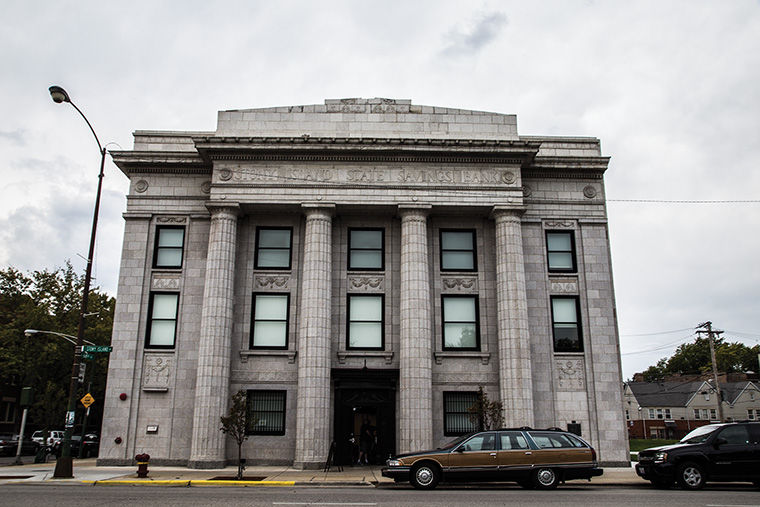Tamir Rice gazebo visiting Chicago as BLM landmark
September 26, 2016
The Cleveland gazebo where 12-year-old Tamir Rice was fatally shot by police is coming to the Stony Island Arts Bank on Chicago’s South Side.
Rice’s death in November 2014 gained the attention of the Black Lives Matter movement and other activist groups after he was killed by police officers who spotted him playing with a toy gun. Since his death, the gazebo has become a monument to Rice and a place where people went to mourn.
“This gazebo is a powerful reminder of Tamir Rice’s murder,” said Theaster Gates, Jr., founder and executive director of the Rebuild Foundation, which owns the Stony Island Arts Bank and other cultural centers, in a Sept. 15 press release. “When an ordinary object becomes the site of such an extraordinary act, it should force us to stop, think and to take action in our community.”
The agreement for the gazebo’s temporary residency at the Stony Island Arts Bank was signed just a few days ago, according to Billy Joe Mills, the Rice family’s leading attorney for the gazebo.
Mills said he is looking forward to seeing how the Arts Bank displays the gazebo.
“I know the Arts Bank has stated [it is] interested in proceeding in a thoughtful way,” Mills said. “They are going to figure out how it should be shown in the most respectful way possible, the most thought-provoking way and, perhaps, in a healing way.”
Tamir’s mother, Samaria Rice, originally wanted the gazebo to be destroyed because it was a painful reminder of what happened to her son. The City of Cleveland also wanted it destroyed because it was a reminder of what their police force had done, Mills said.
However, he added that, on the day of the demolition, the Rice family realized the historical value of the gazebo and contacted the Smithsonian National Museum of African American History and Culture. The museum quickly sent a letter to the City of Cleveland stating the cultural significance of the gazebo and requested it not be destroyed.
Cleveland agreed to preserve the gazebo, but the Smithsonian said it was not interested in acquiring it. Mills said he then reached out to various institutions, asking them if they would like to display the gazebo.
“This needed to be done within a couple of months because the City of Cleveland wanted to move on,” Mills said. “We don’t necessarily want them to move on, and that’s part of the reason we want to preserve the gazebo: because we want people to remember what happened to Tamir, and we want people to talk about it and debate it and discuss it and learn from it.”
Lamon Reccord, a civil rights activist in Chicago known for his role in Black Lives Matter protests, said he is happy to hear the gazebo is coming to Chicago.
“It could be an eye-opener for people to wake up and realize what’s going on,” Reccord said. “It will breathe life into a lot of people. It can be a message to elected officials, politicians and police officers that citizens and residents are holding these people accountable for doing wrongful things in our community.”
Mills said while other institutions have expressed interest in displaying the gazebo, he is not sure where it will go after its Chicago residency ends.
“The gazebo has a lot of power because it imbues the spirit of Tamir, who was an innocent boy killed by his own democracy, his own government, without any kind of due process,” Mills said. “I hope it can become a house for healing and a house for mediation between groups that are at odds with each other.”
Laura Schiavo, an assistant professor of museum studies at George Washington University in the District of Columbia, said it is rare for museums to display such a modern piece, but it is becoming more common, and the gazebo is definitely worth displaying at musems and cultural centers.
“[Museums are now] less about the transfer of knowledge and more about being places for discussion and dialogue,” Schiavo said. “A piece like this gazebo has this incredible value as a starting point for conversation. It does also have this evidentiary, documentary value as well. The gazebo would be the object that would really speak to the open wounds.”








